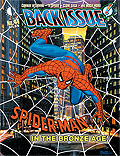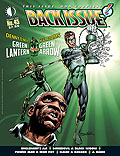
If you were alive in the 1970s, it would have been hard for you to avoid hearing about
This theory, no matter how outlandish, struck a chord with people, as the book became a best-seller and even led to a TV special, In Search of Ancient Astronauts, hosted by Rod Serling. I recall that my father had a paperback copy of the book, and as a child I enjoyed looking through it, as it had pictures of a variety of archeological wonders. Although scientists in general found little evidence to support Von Daniken’s theories, the idea of star-spanning voyagers coming to our backward little planet and driving our evolution has proved to be irresistible to many.
The ancient astronaut concept crops up again and again in popular culture. References to ancient astronauts are often found in works of science fiction. In the film 2001: A Space Odyssey, an ancient alien monolith is found on the moon, and we are shown in flashback that a similar alien monolith on Earth influenced the evolution of early primates. 
The original Battlestar Galactica TV series (1978) had opening narration that went, “There are those who believe that life here began out there, far across the universe, with tribes of humans who may have been the forefathers of the Egyptians, or the Toltecs, or the Mayans. That they may have been the architects of the great pyramids, or the lost civilizations of Lemuria or Atlantis. Some believe that there may yet be brothers of man who even now fight to survive somewhere beyond the heavens…” The show’s design featured a vaguely Egyptian motif.
In 1976, comic book legend Jack Ki rby created the Marvel Comics series The Eternals, which related the story of a hidden race of super-powered beings who had been created millennia before by mysterious alien beings known as the Celestials. The Celestials interfered with the natural evolution of humanity. The Eternals were superficially human but possessed of long life spans and great powers, and had been worshipped by human beings as gods in the past. Their names were bastardized versions of gods and heroes (“Makkari” =”Mercury”, “Zuras” = “Zeus”, etc).
rby created the Marvel Comics series The Eternals, which related the story of a hidden race of super-powered beings who had been created millennia before by mysterious alien beings known as the Celestials. The Celestials interfered with the natural evolution of humanity. The Eternals were superficially human but possessed of long life spans and great powers, and had been worshipped by human beings as gods in the past. Their names were bastardized versions of gods and heroes (“Makkari” =”Mercury”, “Zuras” = “Zeus”, etc).
The list could go on and on, as the ancient astronaut theory remains popular to this day. As a matter of fact, Von Daniken is still on the lecture circuit at age 74! I did finally get around to reading Chariots of the Gods years ago, and while I found it somewhat entertaining, I really couldn't buy into any of Von Daniken's theories. For one thing, I tend to think our ancestors were a much smarter and more talented bunch of folks than Von Daniken does. For another, it seems like Von Daniken is mostly concerned with stating how dangerous his ideas are, and how "courageous" he is for expressing them. He's almost like a religious fanatic in the sense that he's so convinced he's right, he doesn't even consider other possibilities. But he's not alone -there are many other people who have written books on the subject, and both TV and film continue to keep the idea alive with the public. Although there seems to be little reason to believe in ancient astronauts, the idea still fascinates many.




















































5 comments:
The Star Trek episode "Who Mourns for Adonis," the British TV serial (and 1967 movie) Quatermass and the Pit (aka Five Million Years to Earth), and DC's Captain Action comic all used the ancient astronauts idea before Von Daniken.
A Dr. Occult adventure, "Koth and the Seven," in More Fun Comics #16 (1936), used the ancient aliens premise. So did Dr. Fate's origin story, also in More Fun, ca. 1940. IIRC, H.P. Lovecraft also used the idea in pulp magazine stories.
L. Sprague deCamp's book "The Ancient Engineers" offers reasonable explanations for how ancient people could have built their monuments, such as the Pyramids, without any help from space aliens.
Oh yeah, the idea has been around since, well, forever, I did mention in the first paragraph that Von Daniken did not originate the idea. But he certainly popularized the concept and brought it to more people than ever before.
Thanks for taking the time to read some of the older posts!
The original blog pointed out that Von Daniken did not originate the idea. So the comments about Star Trek, Quatermass, etc. were not intended as criticism. The intent was just to give some specific examples, not to nit pick or to say "Look, you forgot about this, that, and the other." And (again, as the blog pointed out) it was Von Daniken who popularized the theory more than anyone.
Post a Comment